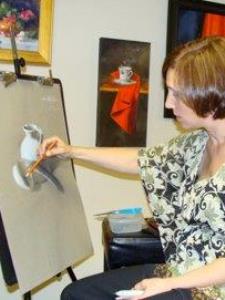The most famous Pointillist artist is Georges-Pierre Seurat. (1859-1891). He invented the technique, and is always associated with this art term. There are a few other artists of his time period who were either influenced by his theory, or had theories of their own that closely paralleled Seurat's theoretical approach to painting, but no other artists actually used Pointillism in their work besides Seurat, and there is no other artist associated with the term "pointillism." Pointillism is a painting technique, and is also an artistic theory. Seurat based his technique on the science of optics. "Pointillism" is a term invented to describe how Seurat's work sought a scientific, logical system using only color dots and tiny patches. It had the added benefit of appearing "jewel-like," glistening, or scintillating. The dots "danced." Colors next to each other affect their neighbors, and create the illusion of light and dark, bright and dull, and can often appear to be a different color than the individual dots actually are. Red and green dots next to each other can appear brown, orange, or grey, and even black; blue and yellow dots next to each other can appear grey, green, black, brown, and even somewhat violet. What appears purple in one light condition can appear blue in other light conditions. These appearances require of the artist very fine atunement and adjustments of hues and also their placement and arrangement, and they can and will change depending upon the surrounding illumination conditions. Pointillism intended to deeply explore these astonishing color behaviors in paint. Color is how humans see. Lightness and darkness (contrast) makes colors appear richer or duller. These attributes combine "optically" to appear as shapes, which we interpret in the brain as "seeing." We perceive things a shapes of dappled light. Seurat is known as the first artist to apply these principles of dappled color patches into painting, and rejecting the use of lines (outlines) and only using shapes filled with colored dots. We call this method and theory "Pointillism."









